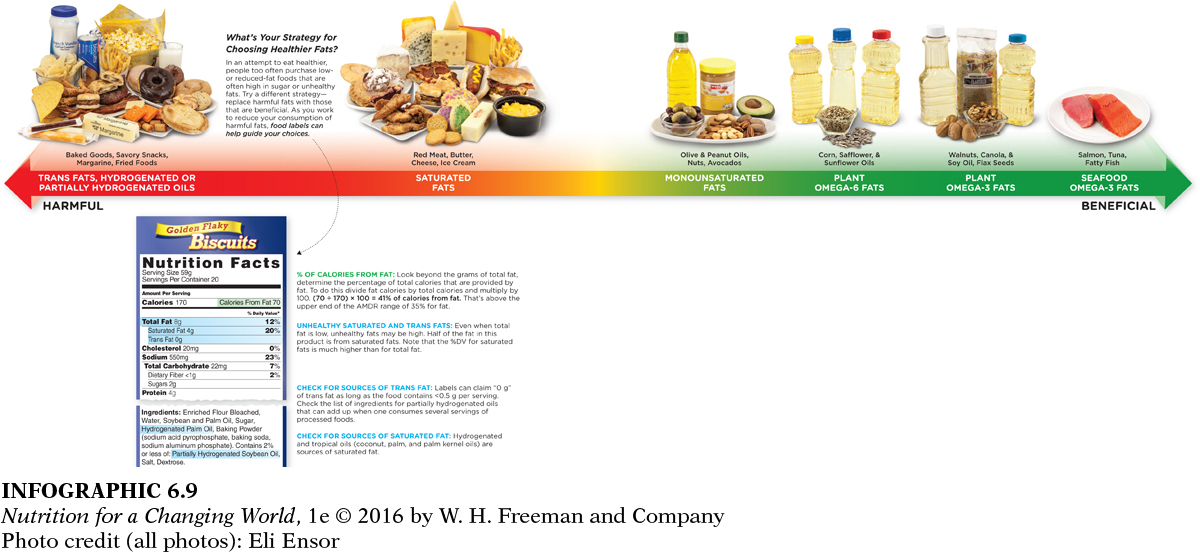TRANS FATS AND FAT SUBSTITUTES
HYDROGENATION chemical process by which hydrogen molecules are added to unsaturated fatty acids
Most people who eat a Western diet—
TRANS FATTY ACIDS fatty acids created by adding hydrogen to liquid vegetable oils (partial hydrogenation) to make them more solid; associated with an increased risk of chronic diseases, such as heart disease and cancer
One outcome of partial hydrogenation, however, is the structure of some of the unsaturated fatty acids can be converted from its natural “cis” configuration to another known as “trans.” These so-
When purchasing processed foods, it is important to look beyond the grams of trans fat listed on the nutrition facts panel because foods with less than half a gram per serving can claim 0 grams trans fat. To minimize your intake of trans fats, avoid purchasing foods that list partially hydrogenated oils in the list of ingredients. Increasing awareness of the dangers of trans fats has resulted in more frequent use of fully hydrogenated oils. When oils are fully hydrogenated all double bonds are eliminated and no trans fats are produced. (INFOGRAPHIC 6.9)

Question 6.9
 What parts of Nutrition Facts panel can help you to reduce your intake of saturated fat and trans fat? How can it help you identify unsaturated fat content? How can a food label help you understand whether a food product is within the AMDR range for fat?
What parts of Nutrition Facts panel can help you to reduce your intake of saturated fat and trans fat? How can it help you identify unsaturated fat content? How can a food label help you understand whether a food product is within the AMDR range for fat?
The ingredients list on a food label can tell you whether a food contains small amounts of trans fats. Look for the words "partially hydrogenated oil" on the label.
In addition, sources of saturated fat are listed in the food ingredients. Hydrogenated oils as well as tropical oils such as coconut, palm, and palm kernel oils are sources of saturated fats.
You can check the total fat content of a food in grams and subtract the saturated and trans fat grams to calculate unsaturated fat content in grams.
A food label can help you understand whether that food is within the AMDR range for fat by doing a simple calculation. Divide the fat calories shown on the label by total calories and multiply by 100 to obtain a percentage. This percentage is the percentage of calories provided by fat--35% is the AMDR upper range for fat.